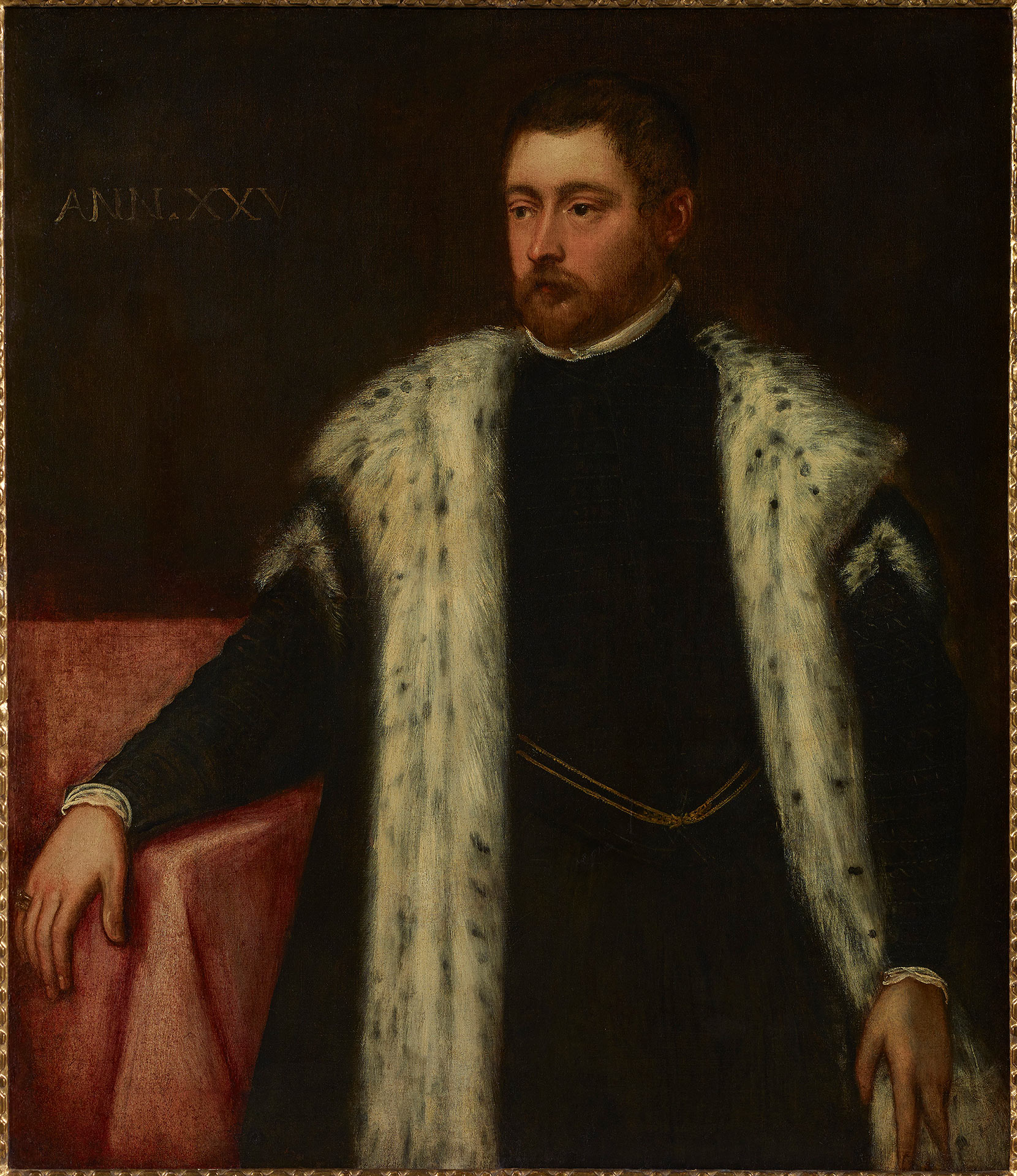
Tintoretto (Jacopo Robusti) (Venice, Italy, 1518-1594)
Twenty-five Year Old Youth with Fur-Lined Coat
Circa 1550-1560
WORK INFORMATION
Oil on canvas, 117 x 100 cm
Tintoretto's true surname is unknown, for Robusti was merely a sobriquet given to his father, a dyer or tintore by profession, although a report from the late 17th century indicates that it was Comin. He may have spent a brief period in Titian's workshop, from whom he distanced himself completely, and in the early days he also borrowed certain things from the Mannerists, but soon Tintoretto began to shows signs of a tormented spiritual personality, expressed primarily in religious works. In Christ Washing the Disciples' Feet (1547, Museo del Prado) he revealed his conception of spatial depth and the void, and in The Miracle of St. Mark Freeing the Slave (1548, Gallerie dell'Accademia, Venice) he conveyed the primacy of emotion and the authenticity of sentiment. These were followed by a decade of formalist, ornamental and erotic Mannerism in bold compositions. Later, as illustrated by the three miracles he painted for the Scuola Grande di San Marco (1562–1566), he imbued his works with restless religious sentiment, emphasising empty space and lighting effects. His magnum opus was done at the Scuola Grande di San Rocco, of whose confraternity he was a member (Sala dell'Albergo, 1564–1567; Sala Superiore, 1575–1581; Sala Inferiore, 1583–1587). There he painted a complex array of Old and New Testament themes in a visionary style, eschewing both Titianesque paganism and the devotional significance of Counter-Reformation art. In his final works for San Giorgio Maggiore (1592–1594) he maintained the Mannerist language—elongated figures, unevenly filled space, intense depth, contrasts of light and shadow, and emphasis on the group rather than the individual figure—to great dramatic effect.
However, Tintoretto was also a noted portraitist. The inscription on the work before us indicates the sitter's age but not his name or the date, information the artist did provide in other portraits. It was attributed to the painter when it entered the collection, and its characteristics are in keeping with his style.
During the second half of the 16th century, long surcoats of black-spotted white fur with peak sleeves became fashionable in Venice, appearing in the portraits of Tintoretto and several other painters. Young men also commonly wore their hair short, cut straight across the forehead, with a moustache and trimmed beard. The high-necked, long-sleeved black tunic, offering barely a glimpse of the white shirt beneath, is found in other portraits by Tintoretto, such as the one at the Detroit Institute of Arts.
The nearly frontal pose, the head turned to the left, the slightly off-centre figure and the hand resting on a table are elements common to many of the painter's portraits. A comparison with the closest works by Titian and Veronese produced after the middle of the century supports the painting's attribution. The sitter's serious expression is consistent with Tintoretto, although his subjects usually gaze directly at the viewer. The loose brushwork on the hair, shirt, fur and gold chain is worthy of its author, and the soft hands and elongated left hand denote his style. The table's strange perspective and the lack of nuance in the crimson tones of the tablecloth are not sufficient grounds for questioning the work's authorship. [José Manuel Cruz Valdovinos]

